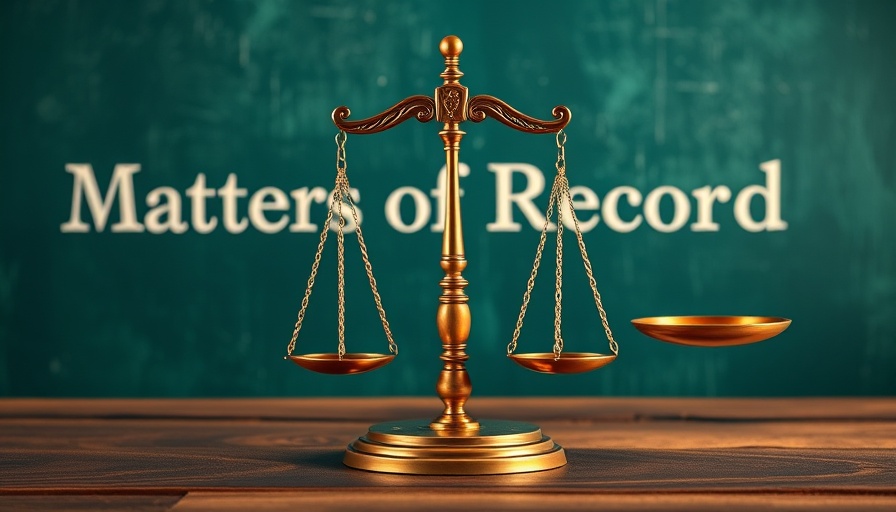
Understanding Matters of Record: Why It Matters
The recent matters of record from St. Louis County District Court on May 28, 2025, provide a unique insight into local legal proceedings and public behavior. This list not only serves as a record of violations but also highlights the underlying issues within the community. From petty theft to more severe offenses, the scope of these cases reflects the complexities of our society and raises important questions about accountability and rehabilitation.
Social Connections: The Impact of Public Offenses
As we dive deeper into these court matter records, it’s crucial to recognize how interconnected these cases are with the social fabric of Duluth. For instance, offenses like disorderly conduct and shoplifting often stem from a variety of social factors, including economic disparity and personal struggles. Understanding the reasons behind these violations can foster a supportive environment for rehabilitation. Community engagement in addressing these root causes is essential for creating meaningful change.
Trends in Local Law Violations: What's Changing?
Diving into statistics observed from court listings, there's a notable trend of increasing speeding violations, possibly correlating with changing behaviors post-pandemic. With more people back on the road, it seems some have adopted a more reckless driving attitude, as seen with cases like that of William Q. Smith, who was fined for driving 86 mph in a 50 mph zone. This trend signifies the need for increased awareness of road safety and traffic laws.
Exploring Counterarguments: Criminal Justice Perspectives
Each case listed has a human behind it, often struggling with issues that contribute to their behaviors. Discussions surrounding adequate rehabilitation versus punishment have been frequent in the realm of criminal justice. Advocates for restorative justice suggest that understanding the circumstances that lead individuals to commit offenses is vital. This perspective could indeed encourage judicial reform aimed at reducing recurrences of such behaviors by enabling support systems rather than solely punitive measures.
Future Predictions: A Community Approach
As our community grows, so do the complexities surrounding crime. Enhancing community engagement through educational programs and support systems for at-risk individuals could mitigate future offenses. Such initiatives could involve steering youth towards positive activities, such as volunteering or mentorship programs that foster a sense of belonging and purpose. Investing in our community now means reducing infractions later.
In conclusion, understanding the implications of matters of record is crucial not only for legal accountability but also for fostering an empathetic community that seeks to address the root causes of criminal behavior. We invite readers to reflect on these cases and consider how local involvement can create a positive ripple effect toward meaningful change within Duluth.
 Add Row
Add Row  Add
Add 




Write A Comment